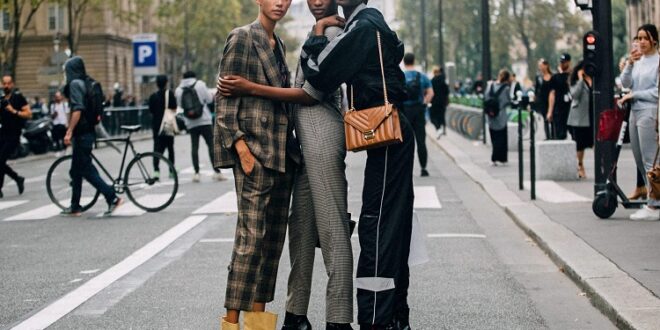Architects and designers at all times have been inspired by nature: the plasticity of floral lines, the anti-stress effect of natural colors, natural materials, and sunlight. By the end of the 20th century, the love of creators for nature confronted the environmental situation in the world and gave expression in a new interior design movement – eco-design. Eco-design is a modern topic even in student essays, says Mary Devis, one of the authors at the write my paper for me company. Students are so interested in this topic that they appreciate putting their ideas into practice by equipping their own rooms with various plants, wooden tables, and shelves, light beige tones.
Let’s find out what kind of interior is considered eco today.
Let’s Get Into the Details
When the eco-approach came into interior fashion, design studios positioned the trend as a new style. That’s not quite right.
Eco is not a separate interior style, but rather a certain attitude of life – an ethical approach to the design of space, which can be inherent in the interior in any style: from rustic to loft. Any historical or geographic style includes a number of distinguishing traits in the decor, allowing us to confidently state, “This mirror is Art Deco, and this stained glass is Tiffany.”. Eco-design has no such characteristics. Natural materials, natural colors, an abundance of natural light, and responsible consumption are the essential ingredients of eco-design. This recipe can work for a variety of styles. Thus, an eco-interior in the rustic style, an eco-interior in the wabi-sabi style, an eco-interior in the loft style, and so on would be more appropriate.
But it should be noted that eco-design is more friendly with modern styles. Its precepts are organically combined with minimalism in the interior in its Eastern or European interpretation.
Getting Closer to Nature
Eco-design is safe for health materials with minimal toxic substances: wood, paper wallpaper, decorative plaster, ceramics, natural stone, natural textiles. A set like this can be in any style, including luxurious art deco or “rich” neoclassic. Natural materials such as sawn and solid wood, wicker furniture, and rattan accessories, jute mats, bamboo stems, and cork flooring are used when you want the eco-approach to be more stylistically visible.
Bamboo and cork are particularly beloved in eco-design also because they are among the materials that are quickly regenerated in nature.
Natural materials aren’t the only way to express love for nature in an environmentally friendly interior. The abundance of living plants and sunlight is also about eco. Traditional internal doors are abandoned or replaced with glass counterparts that do not block sunlight in such a space. If possible, do not curtain the windows, or hide them behind light curtains of natural fabrics.
The color palette is also inspired by nature. As a basis, you can take a certain landscape, for example, the sea coast with sandy, azure, and sunny shades on a base of white, or “forest” scheme, where there are more deep green tones and wood.
Recycling and Responsible Consumption
No matter how paradoxical it may sound, but design in eco-design is not the main thing. The main thing is the principles of responsible consumption.
An eco-friendly solution – the so-called recycling. This interior design concept can include not only material recycling but also what designers refer to as “new life of old things” – utilizing the potential of already produced things.
Grandma’s old shawl may be utilized as the material for a decorative pillowcase, a vintage mirror with only the frame remaining can be utilized as a standalone decoration, and old suitcases can be used as a unique coffee table. Some designers go further and trim the floor with planks from vegetable crates, and the ceilings with old wooden shutters. More and more environmentally friendly materials are appearing on the construction market: tiles made of recycled glass, wallpaper made of waste paper, and so on.
In what other ways does responsible internal consumption manifest itself? In the amount of natural resources that are spent on the maintenance of living space. The responsible decision is to reduce water and electricity consumption. Choose windows and trim materials with good insulation, lay carpets on the floor – all this will keep the heat in the room.
It’s a good idea to switch to energy-saving LEDs and regulate the light intensity instead of using traditional bulbs. Rejection of excessive decorativeness, ergonomics, and practical decor is all in the spirit of eco. That’s why eco-design is so comfortable on the basis of minimalism. But, for all their love of design, styles like Provence, Boho, and Mediterranean may also be eco-friendly if the main decorative set is made up of old and antique treasures.
If you are unable to completely furnish your apartment with pieces made from recycled materials and vintage antiques, you can take a more responsible approach to traditional decorating materials.
The eco-approach involves reducing the rate of consumption. When choosing furniture, it’s best to go for high-quality, long-lasting, easy-to-clean materials that won’t wear out quickly. The longer things live in our interiors, the less we buy, the fewer natural resources are wasted, and the less waste is in the environment.
What is the Essence of Eco-design?
Every year the development of ecological architecture and design gains more momentum. Many studies have proven the link between a person’s physical and mental health and their perception of their surroundings. The emergence of eco-design was originally associated with a sharp deterioration in the quality of the environment. It was the answer to the crisis of excessive resource consumption.
As a result, the eco-style in the interior will necessitate persistence, imagination, and a love of nature on the part of the designer. Fill it with the living energy of flowers, plants, and it will envelop you in comfort. Don’t overfill the space with excessive elements; instead, keep the spaces light and airy. And then you can feel free in them.
 HammBurg Be informed with latest news, reviews, entertainment, lifestyle tips, and much more.
HammBurg Be informed with latest news, reviews, entertainment, lifestyle tips, and much more.




